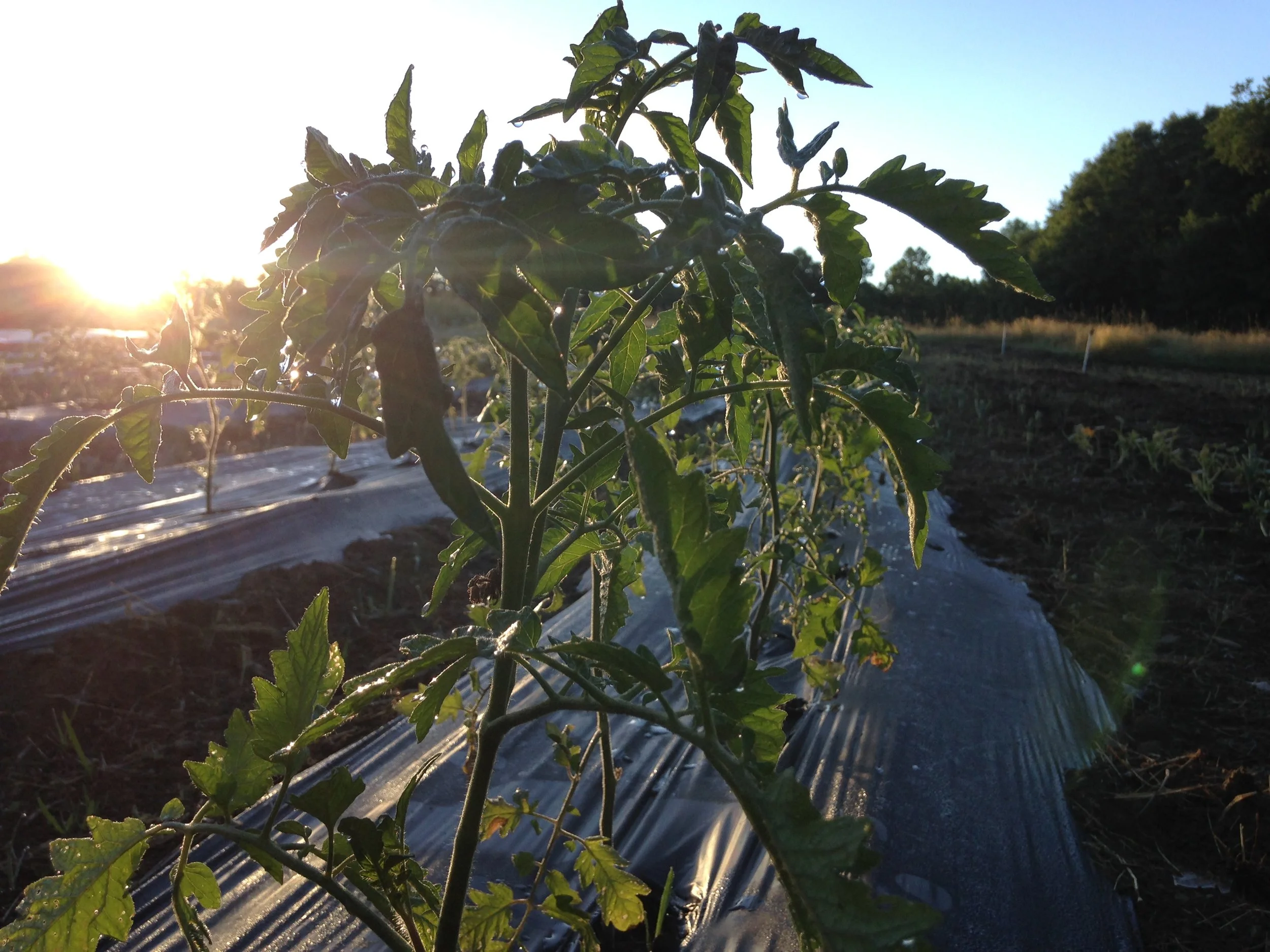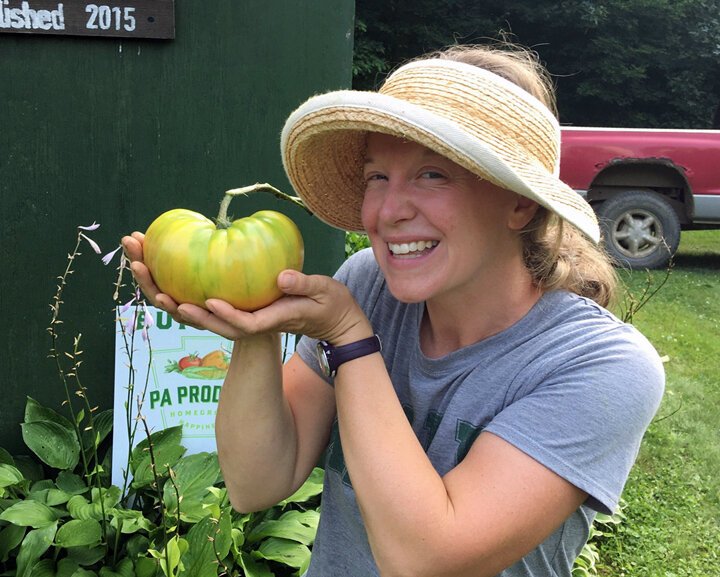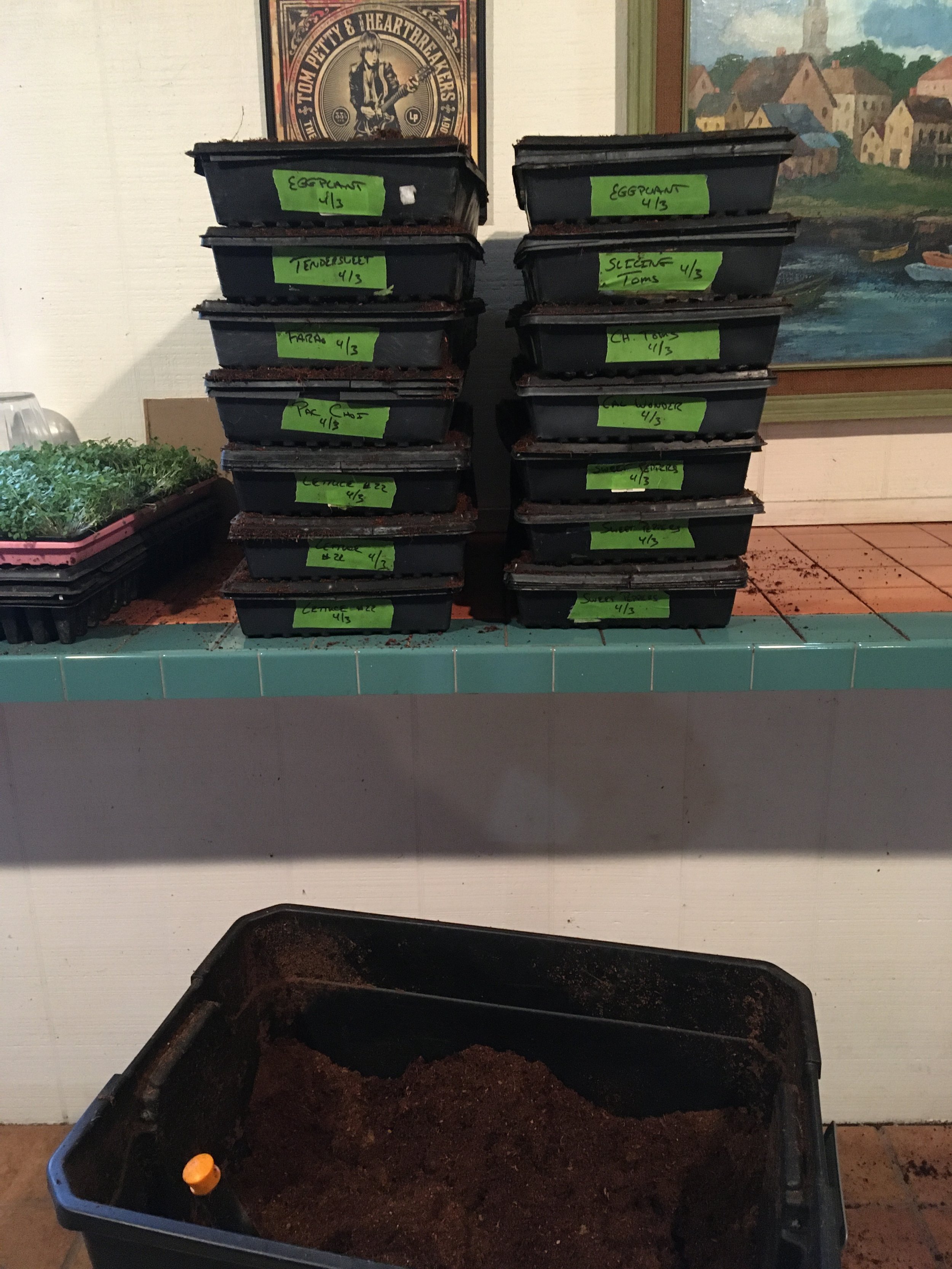We’re right here! But, if you kept up with news of the farm, you may have wondered.
For the busiest folks, I’ll sum it up with a single line: We had a good year at the farmer’s market, and a great year at… well, life.
If you have a little more time, here’s a recap of what we’ve been up to, and a farm update. But first, please allow me to explain my hiatus.
After keeping this journal for several years, I took a break from it this year. Although it’s been incredibly fun, regular posts require a lot of time, and I needed to use that time in a different way.
Some of you may know this, but to others it may be a bit of a surprise. I’ve been a screenwriter for about 15 years. I write “specs.” Sometimes solo, sometimes with a partner who lives in Maryland. Spec is an industry word for a screenplay that nobody asked you to write. It’s a script you’re trying to sell, or use to attract a manager or producer. After years of shoehorning screenwriting into the nooks and crannies of my life (nap time… at 5 in the morning… during PJ Masks), my schedule, headspace, and finances allowed me the incredible opportunity to write full time.
This past year, I wrote and rewrote, and cut my teeth pitching. I pitched projects to more than 50 managers and producers, and had a fun ride as a finalist in the PAGE International Screenwriting Awards — a contest that draws about 9,000 entries. In the science fiction category, my script made the Top 10 out of 500 scripts.
It was a thrilling year, with one learning curve after the next. And 2024 is shaping up to be just as exciting.
So — yes! I’m still here. We’re still here. Life just continues to evolve.
Our biggest news this year isn’t farm related.
After nine wonderful years with our little guy at home, the time had come to send him to in-person school for the third grade. The decision was a combination of factors — a mix of what was best for him… and for me.
As summer clipped along, we all had big feelings about the change. It’s been the three of us at home together for the past few years, and, of course, Silas has been at my side for almost a decade. Letting him go, it hurt.
But first, let me back up a bit to May, when we returned to the farmer’s market at the lovely Meadville Market House.
This was our first season without the CSA. Since we no longer needed to provide produce for approximately 50 families a week, we scaled back the amounts we grew, especially when it came to greens. We still planted an abundance of kale, but only a limited amount of lettuce in the spring. With the sale of greens no longer financially necessary, we decided to ease up.
A more relaxed farm season helped us take two wonderful trips this summer. One was to visit with Jason’s family in Alexandria Bay, on the Saint Lawrence River in upstate New York. The other was hiking the mountains and waterfalls of Shenandoah National Park. This park has more than 100 drivable miles along the Blue Ridge Mountains. You can cruise through the park at 35 mph and pull up to incredible vistas along the entire way. The mountain experience left an impression on all of us, and we’re planning to explore another range next year.
Here are a few photos from our trip to Shenandoah National Park, in Virginia. These were taken on Hawksbill Summit, Shenandoah’s highest peak.
The hikes were awe-inspiring to Silas. We want to see as many national parks with him as we can.
Hi! It’s me on a mountain.
We’ve never been so sad to see a summer end. I cried harder than I have in decades the first morning that school bus pulled away.
It wasn’t long after the tears dried up, that we were beset with constant school-borne viruses. It was so bad we had to end our farmer’s market season two weeks earlier than intended. (This first year of in-person school has been a doozy. Silas is recouping from his eleventh sickness since September.)
Apart from the parade of illnesses, Silas has successfully transitioned into school. Any chance he gets, he makes it known to us that he prefers school at home, but there are perks to regular school that even he can’t deny. It’s helped tremendously that he has a very kind teacher who has nearly 30 years of experience. Art and tech are his favorite classes, and he loves all the fun that happens around the holidays.
We sure do miss him, and we can’t wait for Christmas vacation to start. (Neither can he!)
Jason will take a few days off around Christmas, too, but he’ll have to hit the ground running in January, with grant deadlines looming. He stays busy in his “hobbit hole,” as we call it. His basement office is a cozy, windowless room with an ornate door that’s rounded on the top. It was built by my uncle, and looks exactly like something you’d expect Bilbo Baggins to pop out of.
Kidding aside, I’m so proud of him. His intelligence and conscientious manner have made him an asset to many worthwhile regional projects. (For those who don’t know: Jason is a grant writer and project manager. The company he created, Spark Community Capital, will have its third anniversary next year.)
But what about the farm? Ah, yes — the farm!
Here we are at the farmer’s market.
In the spring, we’ll reconfigure the layout of the gardens. There are sections we no longer need, and we’ll till those under. This will let us brush hog those areas. They’ll be more sightly and less of a haven for varmints.
We’re also redesigning the sections that we’ll continue to plant, and rethinking the 125-foot long beds. The extra long beds were necessary when we were growing CSA-sized quantities, but now truncated rows will be more manageable.
Kale and Swiss chard growing in the Big Tunnel this spring.
And we’re yet again rethinking how we approach the farm. The goal was to become self-employed. We achieved this, although ironically not through farming. While this has been wonderful for our family, it’s left us unsure of how to proceed with the farm.
And the question was raised this year: Do we proceed?
Do we want to?
Ultimately, we decided the answer was yes. We’re going forward with Season 10. But that brings me to how we’re rethinking the farm. Our mindset for this year will be that we’re growing again for us. We’re approaching this season less like a business, and more like, well, a garden. We’re trusting our instincts and listening to our hearts. Anything else has never really suited us.
Jason plants garlic for next year.
I’m not sure how much you’ll hear from me here. There are only so many hours in a day, in a year, in a lifetime. I don’t regret how I’ve spent mine in the past nine years, but I do have a strong sense of how I want to spend the next decade. Merry Christmas, friends. And may you make excellent use of your hours in the new year, too.
~ Stella


























